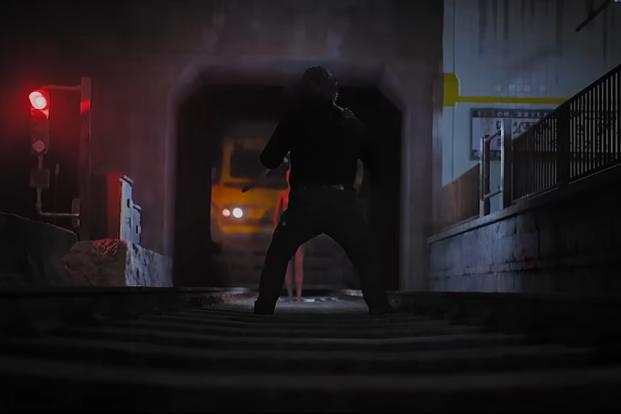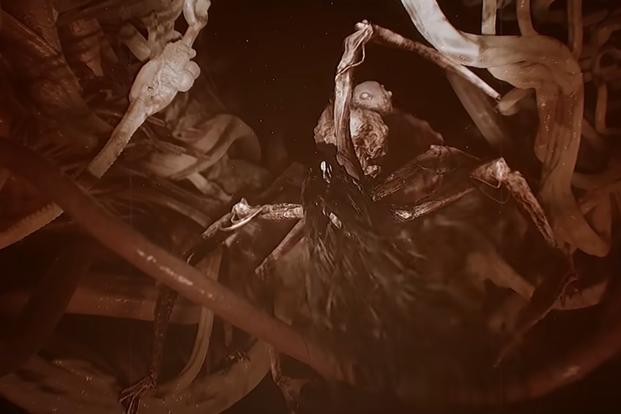Post Trauma is a fresh horror game with all the design elements that made 1990 classics like the Silent Hill and Resident Evil franchises so popular. Its storyline has an interesting twist in that it captures the disorienting nature of post-traumatic stress disorder and the disjointed path of healing from it.
The game, produced by Raw Fury and Red Soul Games, follows the story of four characters who are trapped in a prison of their own trauma.
The indie team that made it openly adores early horror games, and the creators include puzzles, art elements and even frustrating camera angles that were common in the horror genre until about 2001. True to the era, the gameplay is also relatively short -- most players clock in at under 10 hours to complete it.
But the body horror, disorienting cameras and opaque puzzles make the game an excellent metaphor for its titular ailment: "post trauma" stress and, if you get the good ending, "post trauma" growth.
Post Trauma Plot and Gameplay
Without going too deep into spoilers, each of the four characters suffers a terrible trauma that they're incapable of moving past. They all live in a shared horror world that Carlos calls "The Gloom," but parts of the world are specific to each individual and their traumatic event or events.
Carlos navigates a flooded police station with a shark swimming the hallways. Freya hides in a school where monsters roam freely. Jill lives as a giant spider in a hospital. And Roman, the character that the player spends most of their time controlling, is a train operator trapped in a train station.

Read Next: 12 Retro Video Games to Bring You Closer to Your First Sergeant (If That’s Something You Want)
Roman’s story begins as he wakes up lost in the passenger area of a train with no passengers. After solving a couple of puzzles and interacting with some mannequins, he manages to stop the train at a purgatory-like station. In the station, most things are broken or expired, a mass of tentacles and tangled flesh grows on some of the walls, and the only company for Roman is a row of corpses and an army of mannequins. He has to solve puzzle after puzzle to escape the station, but that only gets him into a hellish hospital, then a garden, a school, a maze, a police station and so on.

Through it all, the player has to maintain Roman's humanity even as the environment, and some of the other characters, become more and more horrific.
Takeaways
Players who have had to go through a post-traumatic journey can likely see how the roadblocks, circuitous route and repeated shocks of Roman's journey all relate to PTSD recovery and growth. The game's plot focuses on the need for self-forgiveness and for building a community after trauma. Guilt and the tendency of people to self-isolate when feeling guilty are major contributors to long-term PTSD struggles, especially in military cases, so the design choices feel apt for military audiences.
But the game is, at the end of the day, a video game. And so the final obstacle for the characters is a boss fight, of course, rather than anything deeper or more cerebral.
And while the sometimes tough puzzles are a solid metaphor for how working through PTSD can feel like an impossible task at times – often with no clear next step – it is frustrating from a player perspective to face puzzles repeatedly with no clear path to solving them.

Post Trauma Game Review
Post Trauma is an interesting piece of art exploring an issue deeply relevant to the military. Even though none of the characters has a military tie, the game feels like a better mirror for military service members to look into than most action games on the market.
The game is also good, for what it's worth, in addition to being successful as art. But it is an indie game with all the warts that often dot the face of low-budget games. Some of the environments feel underpolished, many characters clip through the grounds or walls on occasion -- even in cutscenes -- and the fixed camera angles are sometimes frustrating. The combat especially feels like it was added in at the last minute with no real polish.
For anyone who plays it, it was made for consoles and plays much better with a controller than with a mouse and keyboard. Also, keep a notepad or note-taking app handy, and take pictures of puzzles and maps as you go. Notes make those opaque puzzles much, much easier -- similar to how a journal or diary can help with PTSD, if you want to stretch the metaphor.
Keep Up With the Best in Military Entertainment
Whether you're looking for news and entertainment, thinking of joining the military or keeping up with military life and benefits, Military.com has you covered. Subscribe to the Military.com newsletter to have military news, updates and resources delivered straight to your inbox.











